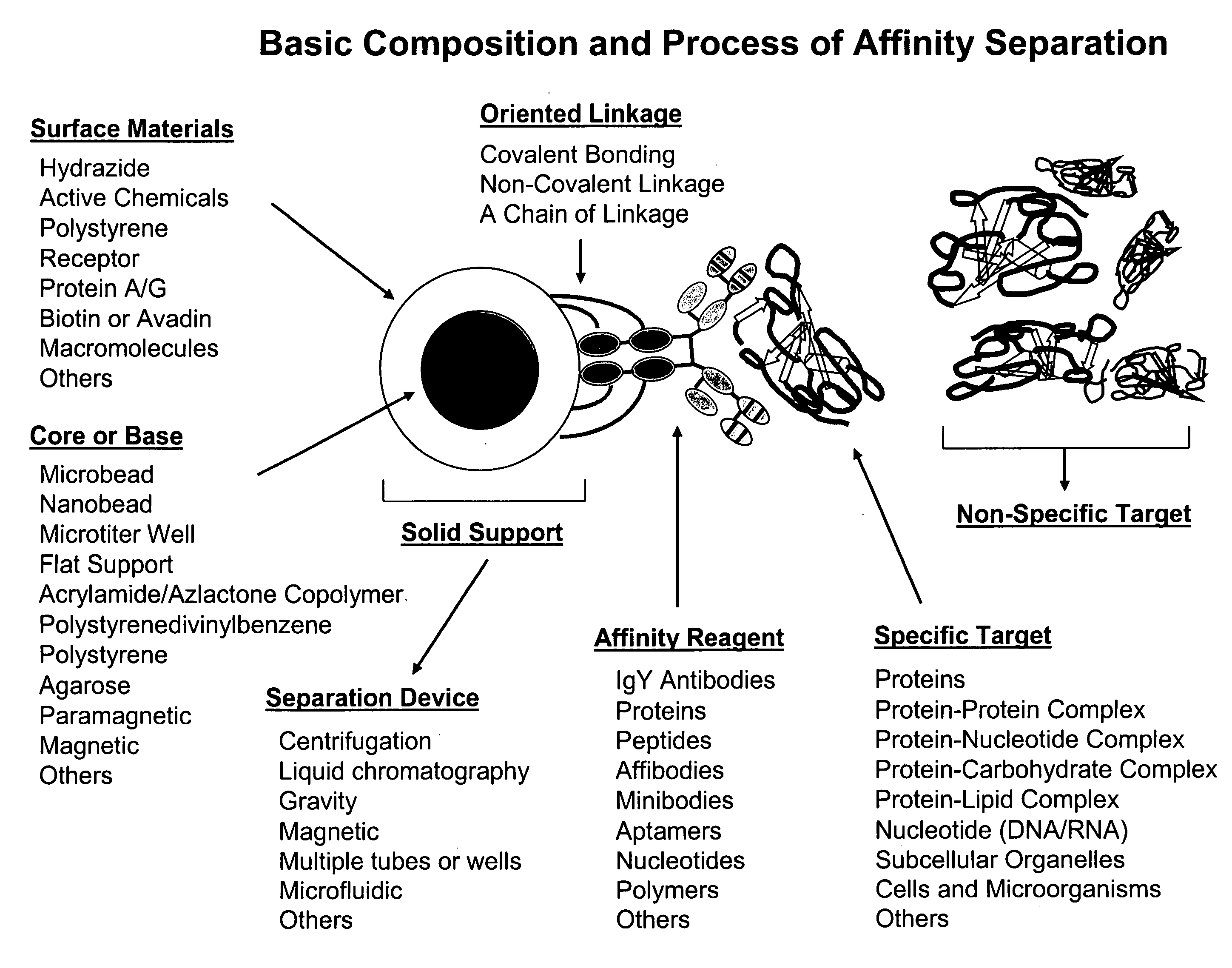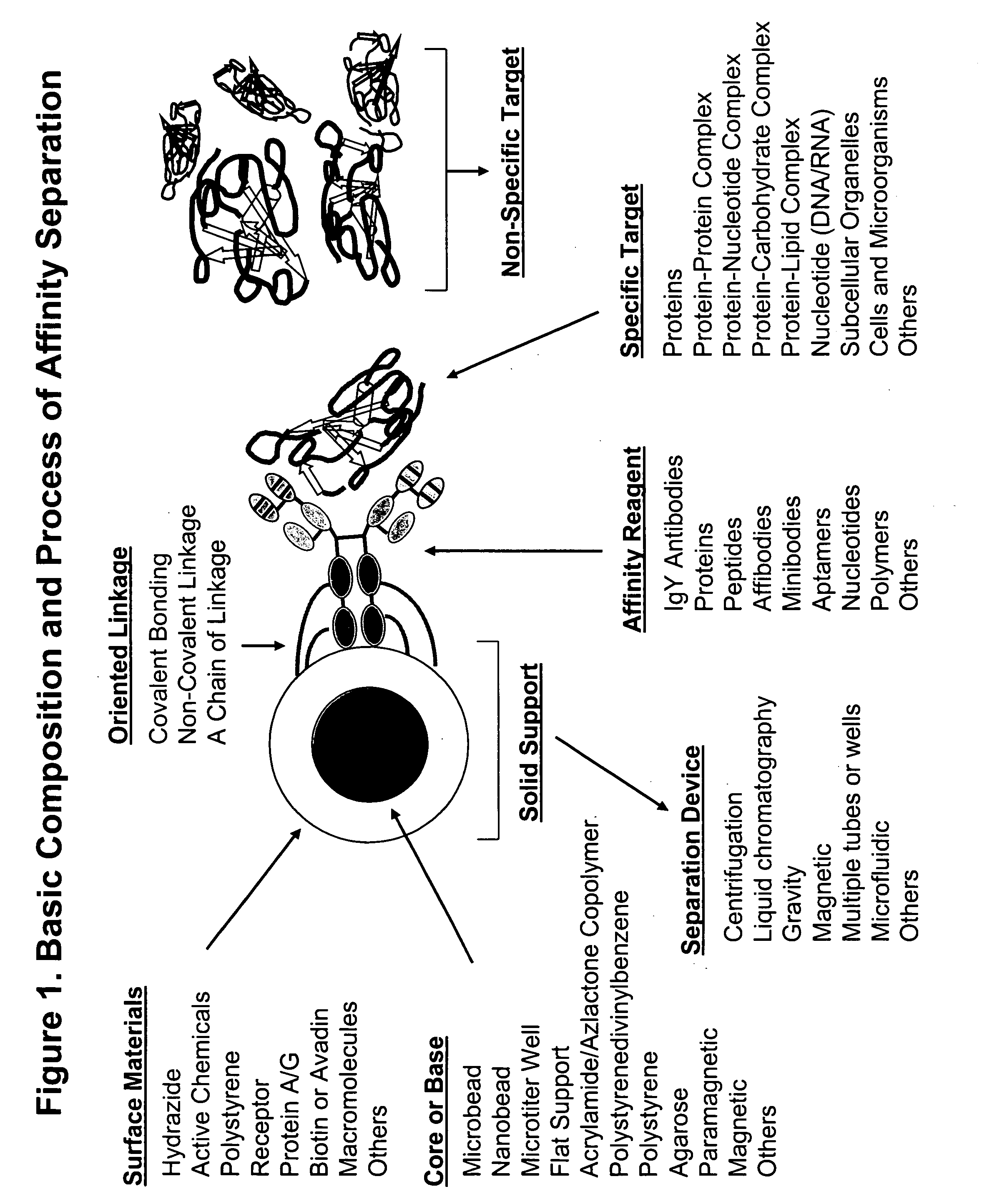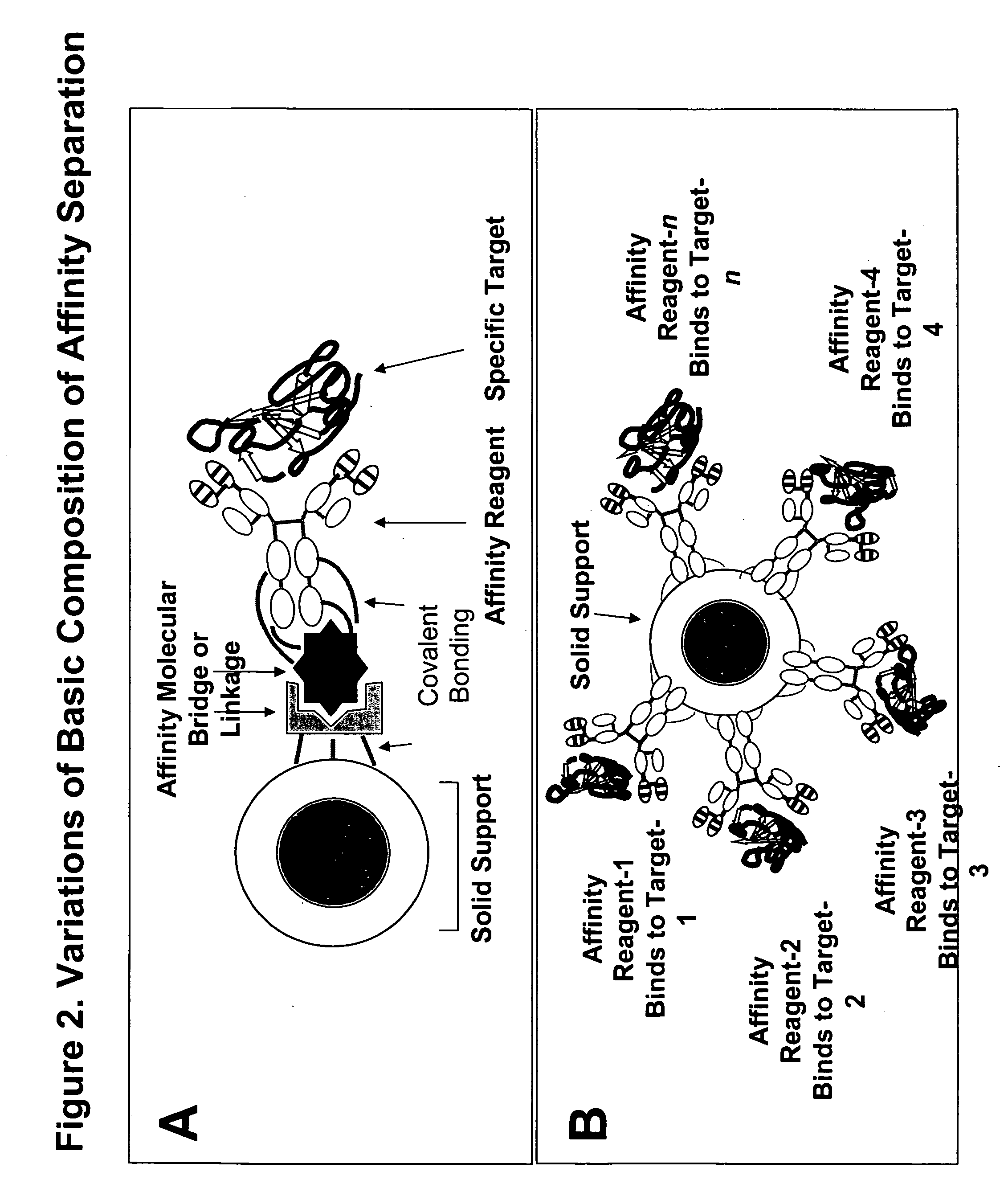Novel high protein tortillas
a tortilla and high protein technology, applied in the field of affinity separation of biological materials, can solve the problems of limited reproducibility, variable capacity and limited reproducibility, and significant limitation in the discovery and analysis of important proteins such as regulatory proteins, cytokines, biomarkers, etc., and achieves the effect of convenient adaptability to different formats and scales of protein separation, improved reproducibility, and improved use
- Summary
- Abstract
- Description
- Claims
- Application Information
AI Technical Summary
Benefits of technology
Problems solved by technology
Method used
Image
Examples
example 1
Direct Covalent Conjugation of Individual IgY Antibodies to Solid Support
[0106] IgY microbeads were initially developed by optimizing conditions for covalently conjugating affinity-purified anti human serum albumin (HSA) IgY to UltraLink® Hydrazide Microbeads (Pierce Biotechnology, Rockford, Ill., USA) at different antibody-microbead conjugation ratios and by optimizing the conditions of HSA depletion using anti-HSA IgY-microbeads in a “batch” mode. Affinity-purified anti-HSA IgY antibodies (3 mg / ml) were oxidized with sodium meta-periodate (5 mg / ml), at room temperature for 30 minutes, followed by dialysis against 4 L of Phosphate Buffered Saline (PBS), in a 2 ml / dialysis cassette (Pierce Product No. 66425: Slide-A-Lyzer Dialysis Cassettes, 10 k MWCO) at 4° C. for 1 h, with 3 changes of buffer. Oxidized IgY was incubated with Hydrazide microbeads (Pierce Product No. 53149) to obtain conjugation ratios of 5, 10, 15 and 20 mg IgY / ml microbeads. Conjugation was carried out at 4° C. o...
example 2
Test of Depletion Efficiency of Anti-HSA IgY Microbeads Using Purified Human Serum Albumin
[0107] Titration of the binding efficiency of anti-HSA IgY microbeads were carried out using Handee Mini-Spin Column (Pierce Product No. 69705) and HSA-spiked PBS samples. Fifty microliters (50 μl) of 50% microbeads were centrifuged (8 seconds) in a spin column. Dried microbeads were quickly incubated with 25 μl samples containing 0.72, 1.39, 2.72, 7.35, 10.85 or 14.83 mg / ml HSA (Diagnostic Grade) (US Biological, Product No. A1327-15) in PBS measured by BCA protein assay. These represented total amounts of 18 μg, 35 μg, 68 μg, 184 μg, 271 μg and 371 μg protein, respectively. Binding reactions were performed in the column at room temperature for at least 30 minutes. IgY microbeads were gently resuspended once every 3-5 minutes using disposable pipette tips. After incubation, the column was inserted into an Eppendorf tube and centrifuged for 8 seconds at 14,000 rpm in a microfuge. Proteins in co...
example 3
Depletion of Human Serum Albumin (HSA) from Serum Samples using Anti-HSA IgY Microbeads
[0109] To test HSA depletion in a human (male) serum sample (Sigrna, H-1388, Lot 122K0424), either 4 μl or 10 μl human serum samples were diluted to a total of 25 μl in PBS. Two rounds of depletion were performed using “10×” microbeads (=10 mg IgY / ml microbeads) as described in Example 2. To analyze depletion results, 2 μl of collected sample were diluted to 201 μl in sample loading buffer and boiled for 3 min. After cooling, 15 μl (for 4 μl serum depletion) or 5 μl (for 10 μl serum depletion) samples were subjected to 10% SDS-PAGE, followed by Coomassie Blue R-250 staining (FIG. 4, A, 4 μl serum depletion; B, 10 μl serum depletion). Tests of depletion of HSA from human serum samples were repeated. Twenty-five microliter (25 μl) of diluted human serum (1:5 and 1:10 dilution in TBS) were subjected to 2 rounds of HSA depletion using 25 μl “5×” IgY microbeads (conjugation ratio: 5 mg IgY / ml microbea...
PUM
| Property | Measurement | Unit |
|---|---|---|
| concentrations | aaaaa | aaaaa |
| dissociation constant | aaaaa | aaaaa |
| pH | aaaaa | aaaaa |
Abstract
Description
Claims
Application Information
 Login to View More
Login to View More - R&D
- Intellectual Property
- Life Sciences
- Materials
- Tech Scout
- Unparalleled Data Quality
- Higher Quality Content
- 60% Fewer Hallucinations
Browse by: Latest US Patents, China's latest patents, Technical Efficacy Thesaurus, Application Domain, Technology Topic, Popular Technical Reports.
© 2025 PatSnap. All rights reserved.Legal|Privacy policy|Modern Slavery Act Transparency Statement|Sitemap|About US| Contact US: help@patsnap.com



